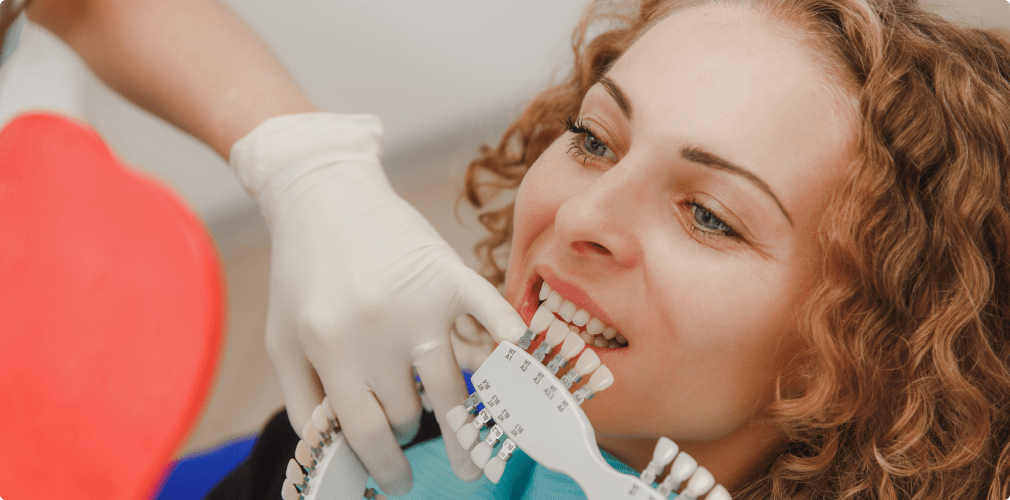Dental veneers
Often referred to as veneers in English, dental veneers are now primarily known as the “smile of the stars”. Because of the image of perfect teeth with which they are associated, veneers seem at first glance to be solely a matter of cosmetic dentistry… and yet they can also be used as prosthetic devices to restore the function of certain damaged teeth.
Have you ever thought you could change the size, shape and position of your teeth, with little or no trimming? Dental veneers are a cosmetic dental treatment that can enhance your smile for a whiter or more perfect smile. Change your smile with dental veneers in just 3 appointments!
What are dental veneers?
These are small, custom-made ceramic shells bonded to the teeth. They are indicated for modifying or restoring the shape and shade of one or more teeth (depending on the patient’s needs and requirements). Most of the time, these prosthetic shells are affixed to the front surfaces of the teeth (known as the vestibular surface), but sometimes, for care reasons, they are bonded to the back surfaces. In any case, they do not cover the entire tooth, unlike crowns. Thanks to this very slim design, the dental preparation required for their installation is very limited (but nonetheless very meticulous!). In this sense, veneers are “definitive” treatments: even if the preparation is minimal, it’s necessary to lightly mill the teeth on which the veneers will be placed, so there’s no going back once the work has been done. The veneers are precisely bonded using strict bonding protocols to ensure their durability over time.
Thanks to these modern prosthetic techniques, veneers have seen their indications expand to include other restorations: veneerlays, for example, are restorations that combine veneers and onlays.

How does it work?
It all starts with digital smile planning, where we simulate your new smile before treatment begins, so you can test it before you even touch your teeth. You’ll be able to see what the new smile will look like and see the differences.
During a second consultation, we will prepare your teeth. With new techniques in the field of bonded ceramic restorations, many cases are being carried out without any tooth preparation (unprepared veneers) or with 0.2 to 0.5 mm preparations.
The bond between tooth and veneer is perfectly mastered in modern dentistry, allowing veneers and teeth to become one. This explains the strength of dental veneers, despite their thinness.
Teeth with properly bonded dental veneers behave like natural teeth in terms of strength, so they need to be cared for like natural teeth, with no need for the patient to change his or her lifestyle.
Please note, however, that there are a few contraindications to veneers. For example, they are not recommended for people with parafunctions: bruxism (teeth grinding), onychophagia (nail biting), etc.
Also worth seeing: Endodontics at Dr Maire’s dental office in Lisbon